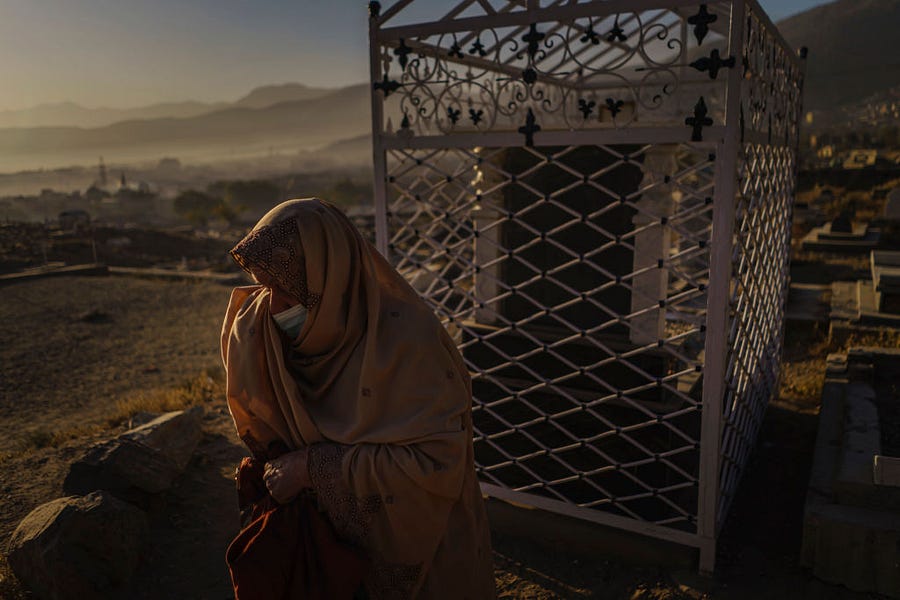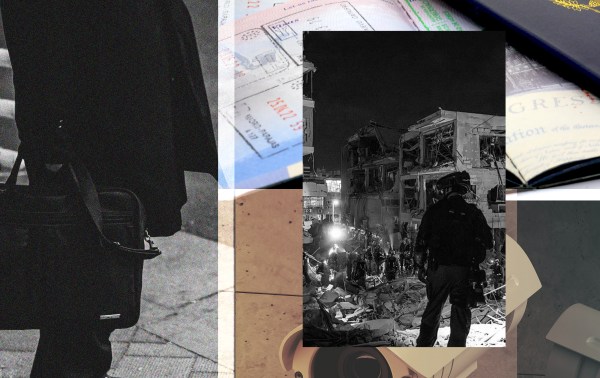Just two weeks after President Biden announced on April 14 his decision to withdraw all American forces from Afghanistan by September 11, the Taliban launched a massive offensive. Since May 1, the jihadists have captured a large swath of the country, laying the groundwork for the resurrection of their Islamic emirate. America and its allies have remained mostly indifferent—retreating from the battlefield as the jihadists advance.
This is what a lost war looks like.
Here are four takeaways from recent events.
The U.S. military is downplaying the Taliban’s gains.
While testifying before the House Armed Services Committee this week, Chairman of the Joint Chiefs of Staff Gen. Mark Milley tried to downplay the Taliban’s gains. “There’s 81 district centers that are currently, we think, are underneath Taliban control. That’s out of 419 district centers,” Milley claimed. “There’s no provincial capital that is underneath Taliban control, and there’s 34 of those.”
Milley went on to argue that “60 percent of the 81 [district centers] were seized last year, and the others since the last two months or so.” He then went on to say that while the U.S. is “concerned,” there are enough Afghan forces “to defend their country.”
There are several problems with Milley’s figures. First, he claimed that 31 or 32 districts fell to the Taliban in the past “two months or so,” but that’s a very low estimate. That was an accurate figure in mid-June, but was no longer the right figure when Milley testified on June 23, as the Taliban continued its offensive.
The U.N. reported on June 22 that more than 50 districts have come under Taliban control since the beginning of May—and that was before the Taliban won even more ground in the past 72 hours. My colleague Bill Roggio, who follows this more closely than anyone, thinks that the Taliban has actually conquered 60 to 70 or more districts since May 1. Roggio’s figures are buttressed by reporting from the Afghan media, which has documented far more districts falling than Milley let on. To give you some perspective on the importance of the Taliban’s gains, Roggio likens an Afghan district to an American county in terms of land mass.
Second, Roggio estimates that the Taliban now controls more than 140 districts—60 or so more than Milley claimed before Congress. It is often difficult to discern when the jihadists have full control of a district. Even so, the majority of Afghanistan’s districts are, at a minimum, outside of Kabul’s control. Roggio also estimates that more than 170 districts are contested. That is in addition to the 140 or so he thinks are controlled by the Taliban, meaning three-quarters of the country is now outside of Kabul’s control. Milley did not inform Congress of this dire situation.
Third, while it is true that no provincial capitals have yet fallen to the Taliban, it is only a matter of time. The Taliban’s fighters have encircled multiple provincial capitals, deliberately waiting for U.S. and NATO forces to fully withdraw from the country before seizing at least some of them. To give just two examples from recent days, Taliban fighters have made incursions into Kunduz and are on the outskirts of Mazar-i-Sharif, two of Afghanistan’s 34 provincial capitals. Many more provincial capitals are surrounded.
The truth is that the U.S. military has attempted to downplay the Taliban’s battlefield gains for years. This is part of the American failure. In October 2018, the U.S. military stopped relying on estimates of the number of Taliban controlled and contested districts, arguing that such figures are “of limited decision-making value” to leaders and all that mattered was progress toward a “political settlement.” In reality, the U.S. military didn’t want to admit that the Taliban was slowly gaining ground at the time. And now the jihadists are taking territory at a rapid pace.
Much of the offensive is taking place in the north, far from the Taliban’s traditional strongholds, but in locations where al-Qaeda-affiliated groups are known to operate.
The Taliban’s home turf is in southern and eastern Afghanistan. But over time, the group has become stronger elsewhere throughout the country. This is due, in no small part, to al-Qaeda’s efforts.
Many of the districts that have fallen to the jihadis in recent weeks are located in Afghan provinces such as Balkh, Kunduz, Takhar and Badakhshan. These northern provinces border the Central Asian countries of Turkmenistan, Uzbekistan and Tajikistan. The Taliban’s fighters even seized the border crossing with Tajikistan, forcing 134 Afghan soldiers to flee into the neighboring country.
Naturally, the Taliban’s ranks in these areas include jihadists from the Central Asian states. In fact, al-Qaeda has groomed Central Asian fighters since the 1990s and it is likely that those efforts are now bearing fruit. The Islamic Movement of Uzbekistan (IMU) was one of the first Central Asian jihadist groups to work closely with al-Qaeda and the Taliban. It splintered several years ago, after its leadership defected to the Islamic State (ISIS), thereby provoking a crackdown by the Taliban. But other al-Qaeda-linked organizations that split off from the IMU, such as the Islamic Jihad Union (IJU) and Ansarullah (which is comprised mainly of Tajiks), continue to fight on. In addition, the Turkistan Islamic Party (TIP), a predominately Uighur organization, is also known to train and fight in northern Afghanistan.
These al-Qaeda-affiliated outfits fight under the Taliban’s banner, so they advertise their role in the war only on occasion. Still, there is ample evidence pointing to their participation in the Taliban’s jihad. Their presence in the Taliban’s campaign became obvious after President Obama withdrew the vast majority of U.S. forces by the end of 2014. Months later, in the spring of 2015, the Taliban opened a major offensive across the north. That campaign was a harbinger of the current offensive and the role of the aforementioned al-Qaeda-affiliated Central Asian groups was well-documented at the time. It’s a safe bet they are still on the frontlines today.
One of the many analytic failures of the Afghan War involves these very same Central Asian jihadist groups. It’s well-known that they are part of al-Qaeda’s network and that they fight for the Taliban, but the U.S. and its allies never developed a working model to explain how they fit into al-Qaeda’s overall organization scheme. So, as U.S. officials repeatedly downplayed al-Qaeda’s presence in Afghanistan, they ignored that these Central Asian groups were growing and didn’t factor them into the assessments of al-Qaeda’s total strength. This was true even though, for example, Uzbeks are known to be part of al-Qaeda’s international facilitation network and the leader of the TIP was drawing a salary from Osama bin Laden’s personnel budget.
Incredibly, American officials still can’t really explain how these Central Asian jihadists fit into al-Qaeda’s organization.
The Taliban’s deputy emir, Sirajuddin Haqqani, has issued orders regarding captured spoils and governance under the Islamic emirate.
The Taliban is preparing its men to rule. On June 24, the Taliban’s deputy emir, Sirajuddin Haqqani, released the latest in a series of instructions to his men. His message was posted on the Taliban’s prolific Voice of Jihad website. Haqqani is one of al-Qaeda’s closest allies and it is significant that, in this hour especially, he speaks for the Taliban’s Islamic Emirate.
Haqqani, a U.S.- and U.N.-designated terrorist, trumpeted his organization’s “continuous series of conquests,” instructing the Taliban’s “district and provincial governors” to “pay attention” to the orders coming down the chain of command. The Taliban leader told his fighters that they shouldn’t be “cruel” or “arrogant” in their moment of triumph. “Good governance is the need of the hour and must be taken into account by our colleagues. To compensate even a small mistake is a tall order.”
Haqqani does not speak like the internationally wanted terrorist that he is. Instead, he speaks authoritatively—like the head of a nation—the Islamic Emirate of Afghanistan. This is yet another indication of the American failure.
U.S. and U.N. officials are still pretending there is a “peace process” and there is a possibility that the Taliban may be willing to agree to a political settlement with Kabul.
The Taliban isn’t interested in peace. At all. The Taliban and its al-Qaeda allies went on the offensive immediately after the U.S. signed a withdrawal agreement with the group on Feb. 29, 2020. The jihadists have launched multiple offensives since then, including the most recent one. Yet, U.S. and U.N. officials continue to pretend that there is some sort of “peace process.” This is delusional.
“We are looking very carefully at the security on the ground in Afghanistan and we’re also looking very hard at whether the Taliban is, at all, serious about a peaceful resolution of the conflict,” Secretary of State Anthony Blinken told reporters on Friday.
“There is only one acceptable direction for Afghanistan—one acceptable direction—away from the battlefield and back to the negotiating table,” said Deborah Lyons, the U.N. secretary-general’s special representative for Afghanistan, on June 22.
But one doesn’t need to look “very hard” to discern the Taliban’s intentions. The jihadists are willing to extract more concessions at the negotiating table, without giving anything up. But they very much plan to win on the battlefield—and in recent weeks, they’ve done just that.
The Afghan government is scrambling to hold on. A delegation led by President Ashraf Ghani visited Washington this week as part of a last-ditch effort to convince President Biden that a full withdrawal of American forces will lead to further jihadist victories. It is unlikely that President Biden will be swayed. Like his predecessor, Biden decries America’s “endless wars” and is largely unconcerned by the terrorists’ endless jihad.






Please note that we at The Dispatch hold ourselves, our work, and our commenters to a higher standard than other places on the internet. We welcome comments that foster genuine debate or discussion—including comments critical of us or our work—but responses that include ad hominem attacks on fellow Dispatch members or are intended to stoke fear and anger may be moderated.
With your membership, you only have the ability to comment on The Morning Dispatch articles. Consider upgrading to join the conversation everywhere.